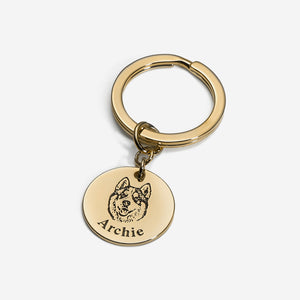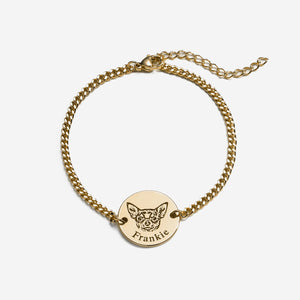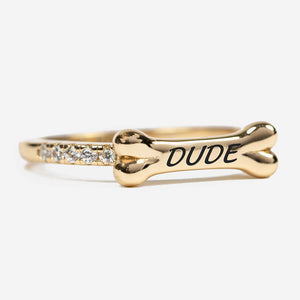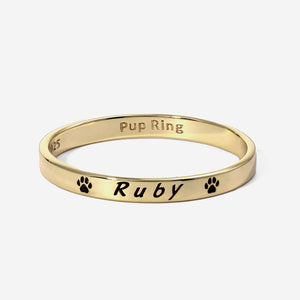Well, it turns out that there are countless ways our dogs are trying to communicate with us! It’s just a matter of knowing what to look for. I’ve split this topic up into 4 categories, so if you’d like to bookmark and revisit this article later to see what your dog is telling you, you can find the signs you’re looking for at a glance!
Tail

A wag means a happy pup, right? Dogs wag their tails to show energy and excitement, and often that is a vigorous wiggling that inspires joy in us too! However, sometimes a tail wag can just mean your dog is hyped up emotionally, which isn’t necessarily happiness. Or, it can even be a sign of tension and preparedness for a bad situation.
There are actually very specific ways that your dog wags their tail to help you pinpoint exactly how they are feeling. You’ll want to watch the position of the tail as well as the speed of their wags! It’s also important to keep in mind what a neutral tail position looks like for your dog when interpreting these signals.. I know it sounds complicated, so let’s break it down-
Position
Raised high- Stress, ready for confrontation
Your dog is stressed out, and may be feeling aggressive, agitated, or like they need to get ready for a confrontation.
Raised slightly- Happy
A slightly raised tail means your dog is feeling relaxed and is in a good mood.
Straight out- Curious
A tail that is straight out is simply a sign that your dog is interested in something and feeling very curious.
Very low- Submissive
Your dog is trying very hard to be submissive and show that it is not a threat. A very low tail, especially tucked between its legs, means it may even be afraid.
Speed
Fast/neutral position- Happy
Your dog is happy! The faster it’s wagging in this position, the happier it is!
Fast/vertical- Aggressive
It might be easy for many people to confuse this, but it is really important. If a dog is walking its tail as high up as possible, it’s feeling very aggressive. You need to be cautious and handle the situation with extreme care. A dog may do this before it is about to bite, and there will be other body language signs that add to this aggressive look.
Very slight- Insecure
A dog that is barely wagging its tail at all is feeling really unsure about a situation.
Suddenly stops- De-escalating or Discomfort
This means that your dog is trying to diffuse a situation without being aggressive. This is a sign that they’re uncomfortable with a situation, such as not wanting to be touched by a stranger.
Finally, dogs without tails, or certain types of tails don’t have the range of motion or ability to show all these signs. They may be more cautious when trying to communicate with other dogs or people. Take a look at the situation and see what you can do to make your dog feel safer and more secure.
Posture

Your dog's posture, and how its overall body language looks, is a good way to look at your dog's feelings as a while. Here are a few specific ways your dog's whole body can show you what mood they're in.
Raised hackles- aggressive or excited
This is when the hair on your dog’s neck and back seem to stand up on end. Often people thing that this could only ever mean intense aggression- however, that’s not always the case! Using this body language in context with other signals your dog is giving you can help you understand exactly what it means. While it does often indicate intense stress in your dog, in a totally different context it may mean your dog is intensely interested in something!
Looking small- submissive, nervous
If your dog appears to be trying to look as small as possible, it’s trying to show that it is not a threat, that it is being submissive, and is probably nervous.
Showing belly- submissive, trusting
If your dog shows you its belly though, that is a very special type of submission- it is extremely relaxed, and pretty much the strongest way your dog could convey its thoughts and feelings about you. Your dog is saying, “I trust you with all my heart!”
Leaning Forward- tense, aggressive
A dog that is leaning forward can mean 2 things. It is feeling aggressive, or it is feeling very interested in something.
Play bow- ready for fun
A play bow is personally my favorite type of doggy body language! A play bow is when your dog bows low with its front legs and keeps its back legs up, arching its back in a beautiful little stretch of interest and joy. If I walk into a room and my dog Cookie does a play bow, I know we’re going to have some fun together! It’s also a silly way for you to mimic your dog and tell them you are ready to play too! It’s the number one way to get your dog in a playful mood.
Paw raised- unsure
If you see your dog raise its paw without being prompted to do so, it is a sign that your dog is feeling uncertain about a situation. (Side note, if you have taught your dog to raise its paw for a trick and you’re interacting with it, that might just be your pup trying to figure out what you want. When Cookie is learning new tricks and isn’t sure what I want, he loves trying to give me a “fist bump”. Funny enough it’s his go-to trick when he’s not sure what I want!)
Facial expressions

Yawn- Stress and self-calming
As humans, we usually start yawning when we’re tired. However, for dogs this can mean something totally different. When a dog yawns, it’s a sign that they are stressed, and the yawn is meant to help them calm themselves down.
Similarly to how yawns appear to be “contagious” between us, dogs will also often yawn if they see either human do it. You can use this to your advantage! Next time your dog is in a stressful situation (such as going to the vet or somewhere new) you can try looking at your dog and yawning. If they yawn back, you’ve successfully shown then that it’s okay, and even though they are stressed out, they can feel a little better about the situation.
Lip lick- anxious
You may not notice it when your dog does this, or you may even think it means your dog is hungry or has simply enjoyed a tasty meal. What you may not realize is that lip-licking is one more sign that your dog is anxious.
Teeth- look at my weapons
When your dog flashes a big, toothy grin, it’s not trying to look good for a picture. Teeth are a dog’s weapon, which they would use to protect themselves and fight in the wild, and it’s a sign that they’re showing off the fact that they are ready to defend themselves or attack. You need to find a way to de-escalate the situation as soon as possible.
Smile, loose and wiggly- submissive
A different kind of smile, though, can show that your dog is relaxed and submissive. If they’re looking smiley without showing teeth, and are loose and wiggly, this is a really good sign. Your pup is in a good mood and feeling like they don’t need to be on guard too much.
Eyes

Where a dog’s gaze lies is an indicator of respect and submission, or aggression and dominance.
Staring and tense- Aggression
When meeting someone new, or in a tense situation, if your dog is tense and staring directly at something with an unwavering gaze, that is a clear sign that a tense situation is quickly escalating. Think about it- if a total stranger was staring you down, you would feel really uncomfortable, on edge, maybe even unsafe. Allowing your dog to stare intently at other animals is not good. You also need to be sure that you do not stare directly at a strange dog’s eyes, or you’re sure to make them uncomfortable or even aggressive if they are a reactive dog.
Staring and relaxed (at you, or someone they are comfortable with)- Love
However, if your dog is sweetly gazing deep into your own eyes, the meaning is completely different. It’s a sign of deep love and connection, as well as trust. In fact, staring into your eyes releases oxytocin in your dog’s brain! To your dog, relaxed staring at you is like getting the gentlest, sweetest, warmest hug ever.
Eye contact is also obviously a great indicator of focus and attention. You may find it useful to teach your dog a specific command for looking right at you. This can help diffuse tense situations with other animals, or if your dog is somewhere they are not comfortable, staring at you can help them focus on you and the fact you are there to protect them. And, of course, focus can be helpful when you are doing other training with your dog!
Soft and relaxed eyes- calm/happy
If your dog’s eyes look soft and relaxed, they are feeling very calm and happy! They’re feeling good about whatever situation they are in.
Hard stare- aggression protection
As stated before, a hard, intense stare is a sign of aggression or protectiveness in a dog. It can be a challenge, telling someone or something else that they need to back off. Keep an eye out for this when you come across other dogs so you know to be aware, de-escalate, or get out of the situation.
White eyes- anxious or stressed
If you see the white of your dog’s eyes, that is a surefire sign that they are feeling anxious or stressed out.
I also personally use this “white crescent moon” sign to tell me that, during some intense play sessions, my dog is far too hyped up and I need to shut things down for a bit while he calms down. This could be walking away or stopping and telling him in a calmer yet stern tone of voice that it’s time to settle down. I actually also use this sign when I’m interacting with other dogs too. If you’re playing with a dog and you start seeing the whites of its eyes, you may be entering territory where they are so hyped up that the play gets a little too rough. It’s important to calm the situation down, especially with a dog you do not know well, because you don’t know what kinds of reactions they may have when they are feeling that intense.
Body Language is Learned








